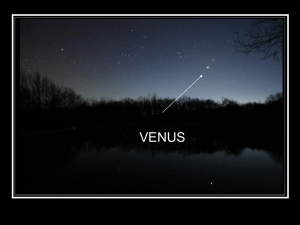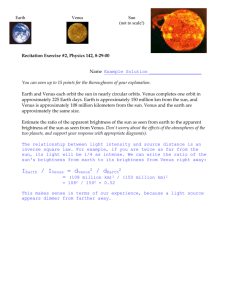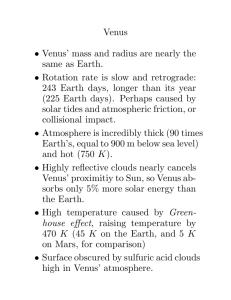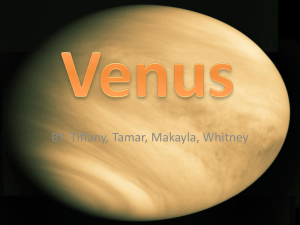Venus - Mr. White's Science Spot
advertisement
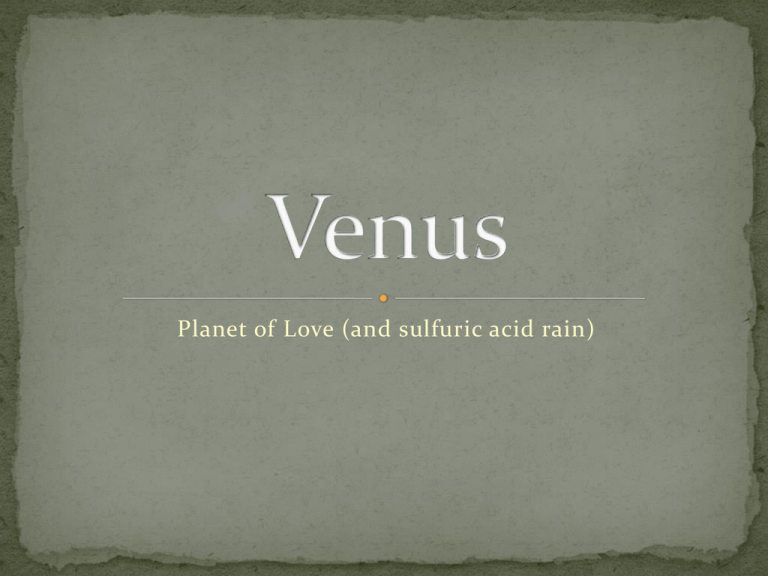
Planet of Love (and sulfuric acid rain) Order of Topics •Properties •Orbit and rotation •Composition and internal structure •Surface features and history • Atmosphere •Magnetosphere Physical Properties of Venus Mass 4.870 x 1024 Kg Mean radius 6.1 x103 Km Mean density 5244 Kg/m3 Rotation Period 243.025 Earth Days (Retrograde) Orbital Period 224.7 Earth days Mean Distance From Sun 1.1 x 108 Km (0.723 AU) Atmosphere 96% CO2 and 3.5% N Surface Pressure 92 Bars Surface Temperature 735 Kelvin Magnetic Field Strength < 0.001 (Earth =1) Venus’s Synodic Cycle Point 1 Venus is a Evening Star Point 2 Venus is an Evening Star Between points 3 and 4 Venus is not visible Point 5 Venus is an Morning Star Point 6 Venus is a Morning Star Geology of Venus Venus has a thin crust with active volcanoes No plate tectonics Mostly flat or rolling hills Two small uplift plateaus Surface Age Some large, old craters About 1000 over the surface Thick atmosphere prevents small meteors from reaching surface Some lava flows free of craters About 1/10 the cratering rate of the Moon 200 million to one billion year old surface Atmospheric Composition of Venus 96.5% CO2 3% N Traces of Sulfur Dioxide Water Vapor Argon Venus Globe The highly efficient greenhouse gases on Venus have scorched its surface. The temperature on Venus is about 735 K. The dense atmosphere evens out the temperature and has eliminated seasons on Venus. Slow winds near the surface rotate with the planet once every 243 days. There is no appreciable magnetic field on Venus, but its dense atmosphere deflects solar winds. Two things needed for a magnetic field. 1. Liquid metal core 2. Rapid Rotation UV Venus The pale yellow clouds of Venus are composed of concentrated sulfuric acid droplets. It takes only 4 days for the upper level clouds to travel around Venus, being pushed by fierce rapid winds. Venus Transit A transit of Venus occurs when Venus passes directly between the sun and earth. This alignment is rare, coming in pairs that are eight years apart but separated by over a century. The most recent transit of Venus was a thrilling sight in 2004. After the June 2012 transit of Venus (the last one in your lifetime), the next such alignment occurs in 2117. Venus and the Moon, Western Colorado


